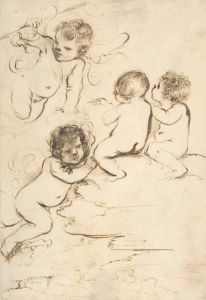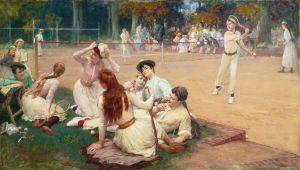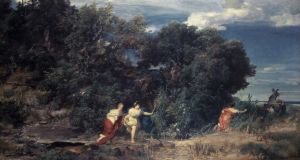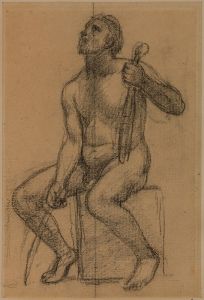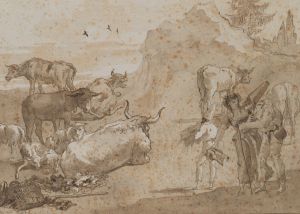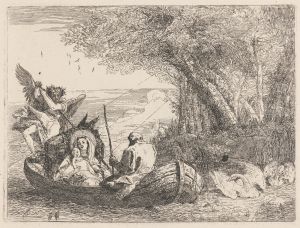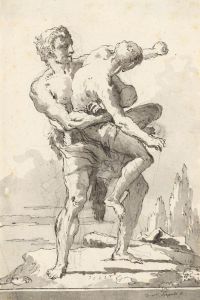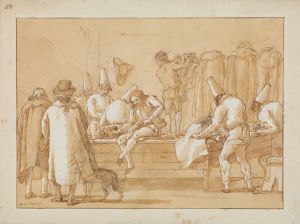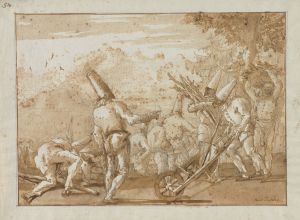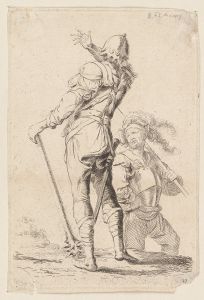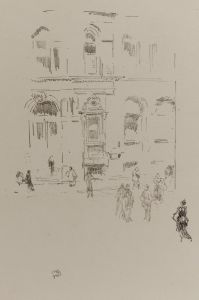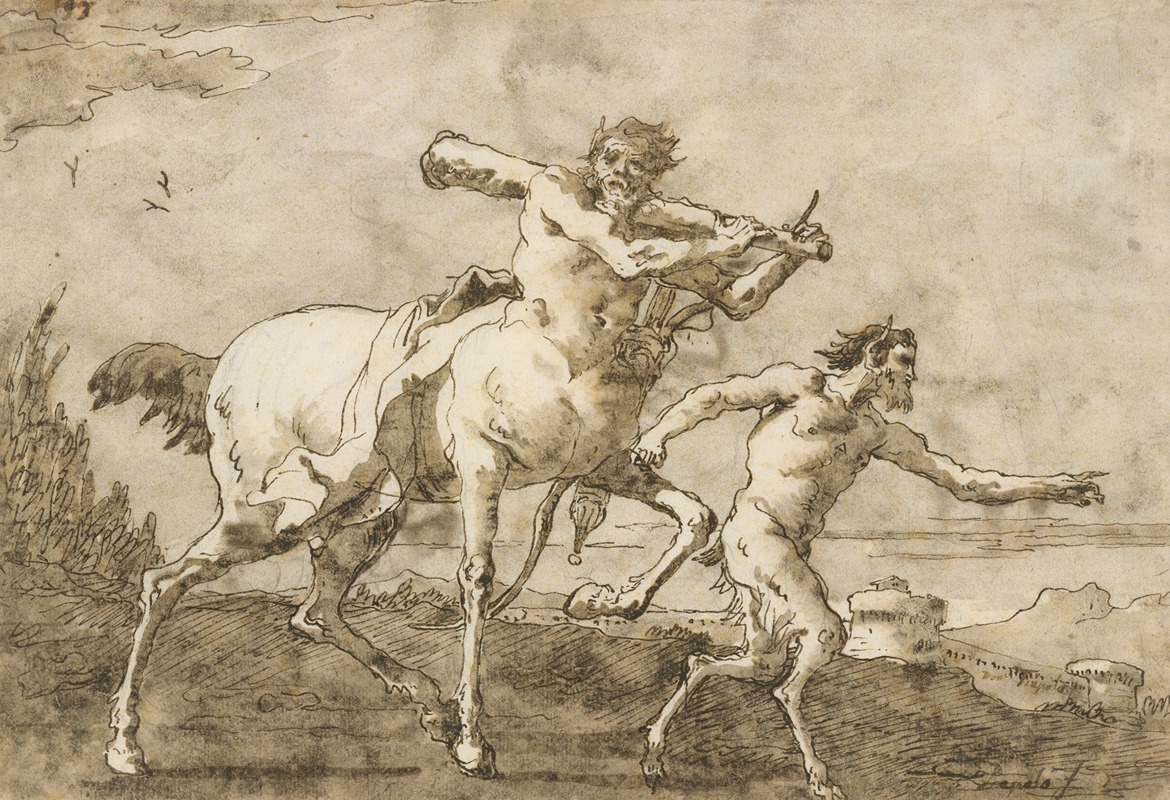
Satyr Leading a Centaur, Who Carries a Club, Bow and Quiver, Outside the Walls of a City
A hand-painted replica of Giovanni Domenico Tiepolo’s masterpiece Satyr Leading a Centaur, Who Carries a Club, Bow and Quiver, Outside the Walls of a City, meticulously crafted by professional artists to capture the true essence of the original. Each piece is created with museum-quality canvas and rare mineral pigments, carefully painted by experienced artists with delicate brushstrokes and rich, layered colors to perfectly recreate the texture of the original artwork. Unlike machine-printed reproductions, this hand-painted version brings the painting to life, infused with the artist’s emotions and skill in every stroke. Whether for personal collection or home decoration, it instantly elevates the artistic atmosphere of any space.
"Satyr Leading a Centaur, Who Carries a Club, Bow and Quiver, Outside the Walls of a City" is a painting by Giovanni Domenico Tiepolo, an Italian artist known for his works in the Rococo style. Giovanni Domenico Tiepolo, often referred to as Giandomenico, was born on August 30, 1727, in Venice, Italy, and was the son of the renowned painter Giovanni Battista Tiepolo. Giandomenico followed in his father's footsteps, becoming a prominent painter and printmaker in his own right.
The painting "Satyr Leading a Centaur, Who Carries a Club, Bow and Quiver, Outside the Walls of a City" is part of Giandomenico Tiepolo's extensive body of work that often explored mythological themes. This particular piece depicts a satyr, a creature from Greek mythology known for its human upper body and goat-like lower body, leading a centaur, a mythological being with the upper body of a human and the lower body of a horse. The centaur is armed with a club, bow, and quiver, suggesting a readiness for combat or hunting.
The setting of the painting is outside the walls of a city, which can be inferred from the title. The city walls in the background provide a sense of location and context, indicating that the scene takes place in a transitional space between civilization and the untamed wilderness. This juxtaposition of the wild and the civilized is a common theme in mythological art, reflecting the tension between human society and the natural world.
Giandomenico Tiepolo's style is characterized by its dynamic composition, vibrant colors, and detailed rendering of figures and landscapes. His works often exhibit a sense of movement and drama, which can be seen in the lively interaction between the satyr and the centaur in this painting. The use of light and shadow adds depth and dimension to the scene, enhancing the overall visual impact.
The painting is an excellent example of Giandomenico Tiepolo's ability to blend classical mythology with the artistic sensibilities of the Rococo period. The Rococo style, which emerged in the early 18th century, is known for its ornate and decorative qualities, as well as its emphasis on lightness, elegance, and playful themes. Giandomenico's work often reflects these characteristics, making his paintings both visually appealing and rich in narrative content.
While specific details about the creation date and current location of "Satyr Leading a Centaur, Who Carries a Club, Bow and Quiver, Outside the Walls of a City" are not readily available, it is clear that the painting is a significant example of Giandomenico Tiepolo's artistic legacy. His contributions to the world of art, particularly in the realm of mythological and genre scenes, have cemented his reputation as a master of the Rococo style.
In summary, "Satyr Leading a Centaur, Who Carries a Club, Bow and Quiver, Outside the Walls of a City" by Giovanni Domenico Tiepolo is a captivating work that showcases the artist's skill in depicting mythological subjects with a Rococo flair. The painting's dynamic composition, vibrant colors, and detailed figures make it a noteworthy piece in Giandomenico Tiepolo's oeuvre, reflecting the enduring appeal of classical mythology in the visual arts.





